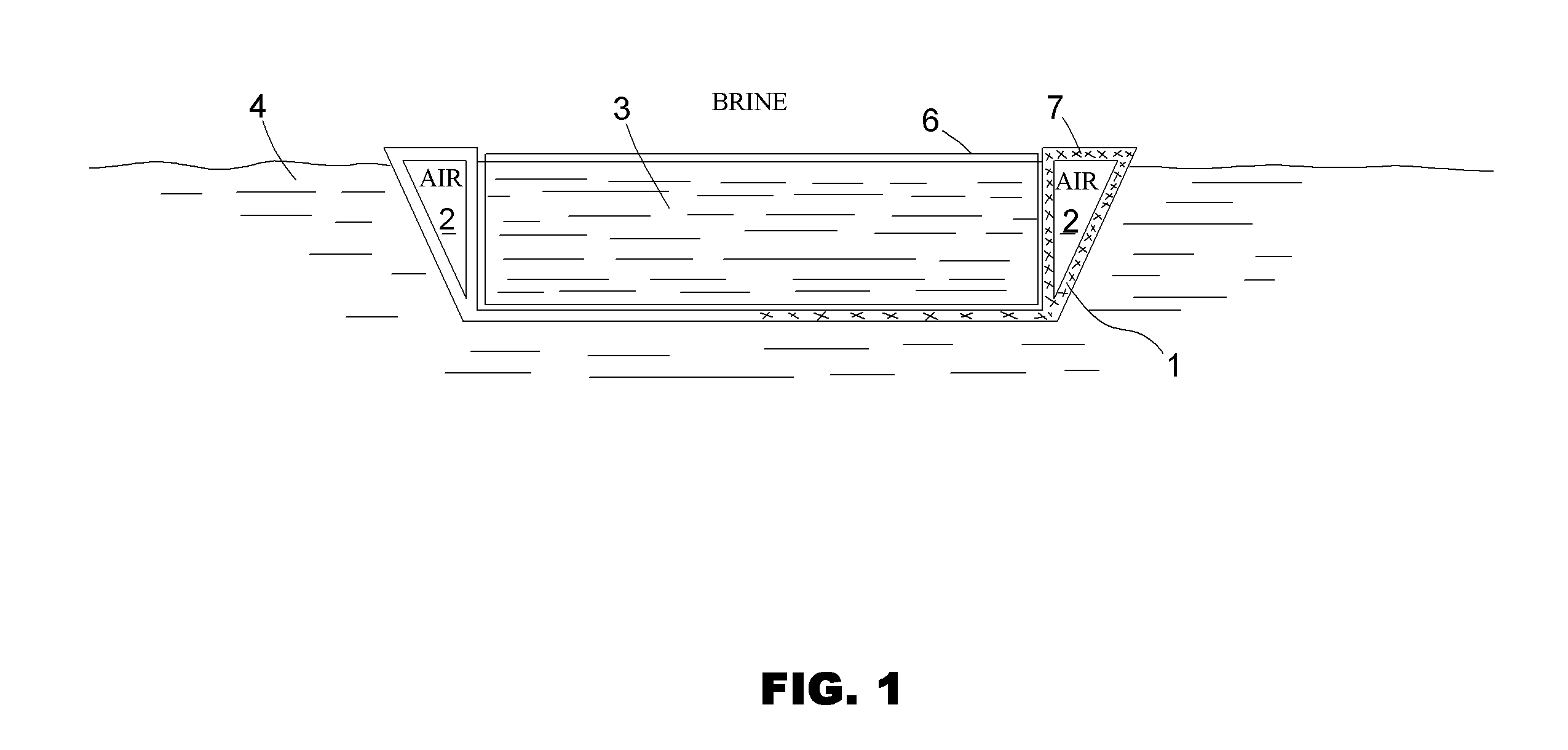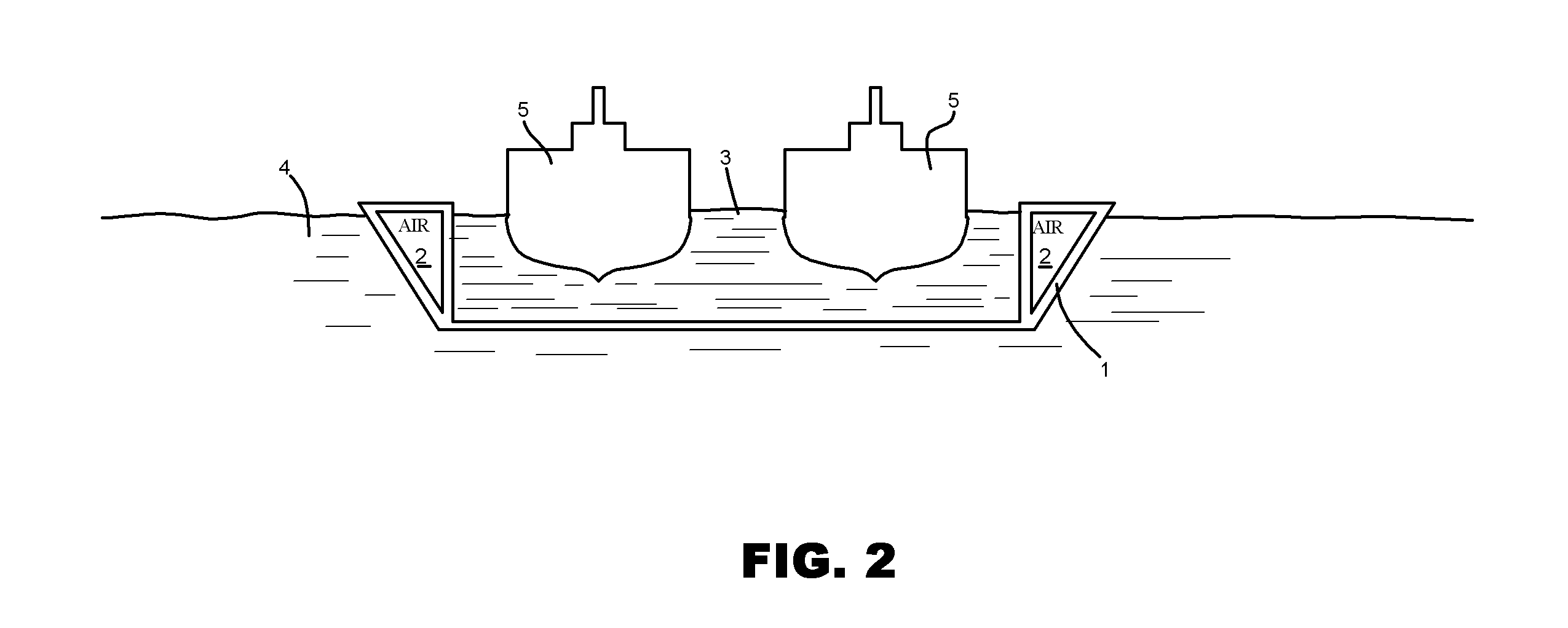Floating canal system for seas with tendency to freeze
a floating canal and sea technology, applied in the field of floating canal systems, can solve problems such as insufficient concentration to prevent freezing
- Summary
- Abstract
- Description
- Claims
- Application Information
AI Technical Summary
Benefits of technology
Problems solved by technology
Method used
Image
Examples
Embodiment Construction
[0012]It is well-known that a sodium chloride-water solution becomes saturated at around 28% salt. Brine solution of approximately 22% salt freezes at around −19 degrees C. (or −2.2 degrees F.). While Arctic air temperatures near the North Pole can be as cold as −32 degrees C., winter temperatures along the route of the Northwest Passage seldom reach more than −20 degrees C. Summer air temperatures can be as high as 5 degrees C. along the route. Also, with global warming, more and more ice is melting, and temperatures are rising.
[0013]FIG. 1 shows an embodiment of the present invention in cross-section. A frame 1 made from Ferro-Cement or other material is constructed with ballasts 2 that cause the section to float in sea water. The cost of the individual sections is less than that of a typical eight-lane highway even including the cost of towing and installing the sections. The sections typically have gates 6 at both ends that can be opened to create the canal, and closed to allow ...
PUM
 Login to View More
Login to View More Abstract
Description
Claims
Application Information
 Login to View More
Login to View More - R&D
- Intellectual Property
- Life Sciences
- Materials
- Tech Scout
- Unparalleled Data Quality
- Higher Quality Content
- 60% Fewer Hallucinations
Browse by: Latest US Patents, China's latest patents, Technical Efficacy Thesaurus, Application Domain, Technology Topic, Popular Technical Reports.
© 2025 PatSnap. All rights reserved.Legal|Privacy policy|Modern Slavery Act Transparency Statement|Sitemap|About US| Contact US: help@patsnap.com



